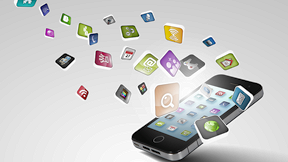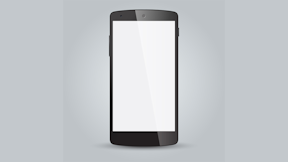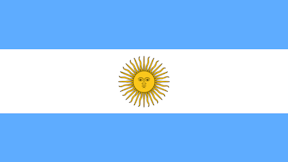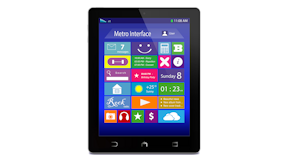|
|
Watch out for those counterfeit apps

You want the latest apps to get the most out of your tablet or smartphone. And today’s apps are truly incredible, allowing you to download documents, view reports and watch TV or movies right on your mobile device. But be careful when shopping in the App Store or on Google Play. You might not be buying the app you think you’re getting.
Counterfeits
PCWorld recently took a look at the growing number of counterfeit apps cluttering the App Store and Google Play marketplace. PCWorld pointed to a study by software firm Arxan to back this up. According to the study, 100 percent of the top paid apps on Android and 56 percent on iOS were being impersonated in a counterfeit form.
Free apps
The news was bad when it came to free apps, too. Arxan found that 73 percent of Android apps in the top-15 ranked free apps had a counterfeit version on third-party stores. This figure stood at 53 percent for the top-15 ranked free apps for iOS, according to the story. And this is a trend that isn’t reversing. According to the PCWorld story, Arxan found much the same situation when the explored counterfeit apps last year.
A real danger
This is dangerous, of course, for smartphone and tablet users. It’s especially dangerous for companies that employ a bring-your-own-device policy. After all, these counterfeit apps often come with built-in viruses. Employees who bring them into the office can quickly spread viruses throughout the workplace. The PCWorld story highlights just how important it is for companies to spend time educating their workers about how to recognize counterfeit apps.
Top ↑
|
Turning your tablet into a business tool

Tablets are a lot of fun. You can use them to search the Internet, watch movies and post to your Twitter and Facebook pages. But what if you want to use your iPad or Android tablet as a real business machine, one that you can use for video conferencing, writing reports or creating PowerPoint presentations? Well, you’re in luck. Brett Nuckles, a writer for Business News Daily recently wrote about some of the accessories that could turn your tablet into a machine capable of helping you get more business done.
Keyboards
Of course, the biggest problem is that tablets don’t come with keyboards. And businesspeople will struggle to write anything longer than an e-mail message with on-screen keyboards. Fortunately, as Nuckles writes, manufacturers are creating more responsive QWERTY keyboard accessories for tablets. Often business owners will have to rely on Bluetooth to connect a keyboard to their tablets wirelessly, though some tablets feature 40-pin connectors that allow you to attach a keyboard directly to them. Then there’s Microsoft’s Surface line of Windows 8 tablets. They can attach to their own keyboards.
The mouse
If you want to do serious business on your tablet, you’ll most likely need a mouse, too. Fortunately, you can choose from a wide range of mice, either those that connect through a USB port or those that rely on Bluetooth to connect wirelessly. Either way, a mouse can help you move more effortlessly across your tablet, making it far easier to create business presentations.
Stylus
Want to use your tablet like a digital notebook? You can, if you pair it with a stylus. As Nuckles writes, several tablets already feature a stylus. Samsung’s Galaxy Note 10.1 is one. It comes with a built-in stylus and a pressure-sensitive touch screen. Microsoft Surface tablets also include their own built-in styluses. If you have an iPad, you’ll have to explore a stylus that you can connect to it.
Top ↑
|
The Nexus 5 might be boring, but that’s not a bad thing

The Google Nexus 5 smartphone is boring. But as Wired reviewer Matthew Honan wrote recently, that’s not a bad thing. In fact, Honan wrote that rather vanilla nature of the phone works. It allows users to concentrate on the device’s features and simplicity. And these are both positive reasons why consumers seeking a new smartphone should consider the Nexus 5.
Boring by design?
Honan writes that the Nexus 5 is far from a sleek piece of hardware. In fact, he writes that it might be the most boring smartphone of the year. He compares it to vanilla soy milk latte. Again, though, this isn’t a negative. Honan writes that the physical phone itself seems to disappear when you’re using it, which, he adds, might have been the point all along.
Big screen
The Nexus 5 features a large five-inch screen. HD videos and photos look impressive on it, Honan writes. And text, too, comes off sharp and crisp. The phone’s new feature allows apps for reading, videos and gaming take over the full screen. Honan writes that he’s never had such an immersive experience watching video on a handset.
Calls, texting
Of course, a smartphone’s most important function is making and receiving calls and texts. And on this count, the Nexus 5 performs well, Honan writes. Text messaging and chat have all been moved to the Hangouts app, which means you can use this app now to also send and receive text messages.
Top ↑
|
Be glad you don’t have to buy an iPad in Argentina

Think iPads are expensive in your local electronics store? Be glad you don’t live in Argentina or Brazil, where the mobile devices can cost more than $750 retail. Mashable writer Zoe Fox recently took a look at the countries where the iPad costs the most. The good news for U.S. consumers, the United States didn’t make the top-10 list.
Costly in Argentina
Fox, citing data from CommSec, writes that a 16GB iPad with Wi-Fi and Retina display costs a whopping $1,094.11 on average. That’s a lot to shell out for an iPad. Consider that in the United States, the same iPad is sold for an average of $499.
Other pricey locales
Of course, Argentinians aren’t the only consumers paying a lot for their iPads. According to Fox’s story, the device costs an average of $791.40 in Brazil, making the country the second most expensive place to buy an iPad. In Denmark, the iPad will set you back $725.32, while it’ll cost you $715.54 in Greece. In Sweden, expect to pay $706.87 for the mobile device.
The next five
Those are the top-five most expensive places to buy an iPad. But they’re not exactly cheap in Poland, either, where the device costs an average of $704.51, or Finland, where it retails for $695.25. In Portugal, the device costs an average of $688.49, the same price you’d have to pay if you lived in France. And in the Netherlands, the 10th most expensive place to buy an iPad, purchasing an iPad will cost you $683.08.
Top ↑
|
Sometimes Windows tablets shouldn’t act like PCs

Microsoft touts that its Windows tablets can also double as PCs. That is undeniably a good thing. However, as ZDNet writer James Kendrick writes in a recent online story, that can also be a bad thing.
Glitches
The problem, Kendrick says, is that sometimes the PC features on Windows tablets don’t work as well as they should. That’s a problem for consumers who want the experience of a tablet. Kendrick writes that tablets are designed for quick access. Users want to turn on the devices and start using them, something that Kendrick says happens with Android tablets and iPads. Unfortunately, it’s something that doesn’t always happen with Windows tablets.
Frozen
Kendrick writes about the dreaded Frowny Face of Death, which announces when a Windows tablet needs to restart. Unfortunately, there are times when that hated blue screen freezes into place. To restart the device, users have to manually reboot by pressing down on the power button. This, Kendrick writes, is not the way tablets are supposed to work.
Sluggish
Kendrick also writes that his Tablet 2 — which he likes, he writes — is getting sluggish. Sometimes, he writes, it takes up to 10 seconds to wake up from sleep mode. This used to take just a second or two to do this. This, again, is not the way tablets are supposed to operate.
Top ↑
|
|






Leave a Reply
Want to join the discussion?Feel free to contribute!